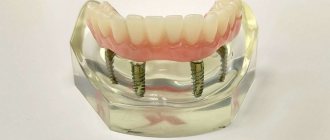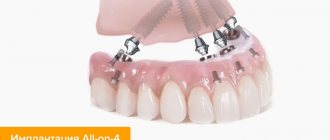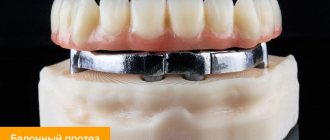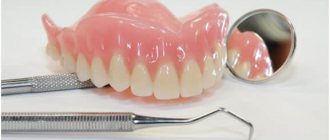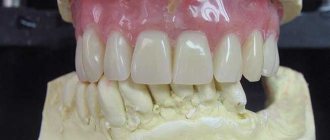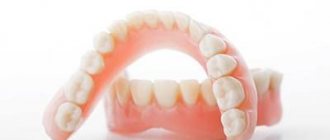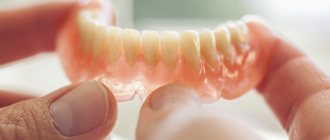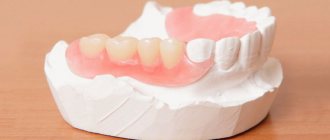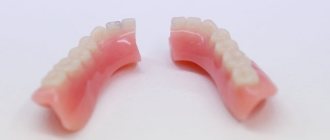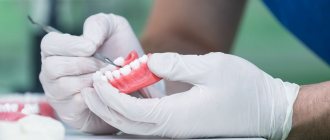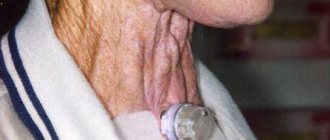Home>Services>Prosthetics>Covering dentures
Service Questions and Answers Results from our clients Prices Promotions
As you know, teeth are not capable of regeneration, so you should not expect a miracle; teeth will not grow on their own.
But this miracle can be accomplished by dentists with the help of modern materials and technologies. Depending on the condition of the client’s dentition and his wishes, both implants and dentures can be used.
The Diamant aesthetic dentistry clinic can offer a wide selection of overdentures made from various materials, with different types of fastening.
Also in our clinic, specialists provide preventive cleaning of dentures and their subsequent correction.
9 hours left until the end of the promotion
What is an overdenture?
Overdentures are dentures that fit over your real teeth.
There are two types:
| Type | Details |
| Category I | Complete dentures are designed to replace teeth in complete absence of teeth. |
| II category | Partial overdentures are used when there are one or more teeth in the mouth. |
Also, this type of prosthesis differs in the material from which it is made:
- Nylon;
- Plastics;
- Combined (combination of nylon and plastic);
- Acrylic;
- Metal (lock part).
Fastening of such a prosthesis is ensured by various locking clamps:
| Latch type | Description |
| Clasps | Used in the presence of an abutment tooth. The clasp is made of hypoallergenic metal, which is given the color of the gums for authenticity. |
| Implants (titanium, beam, push-button) | A titanium implant is used as a supporting root. A button implant consists of two parts, similar to buttons on clothes - one part is attached to the prosthesis, the second is an implant in the form of another part of the button. |
| Magnetic latches | The principle is the same as with push-button locking, but the locking mount consists of magnets. |
| Crowns (telescopic) | Allows you to firmly fix the structure. |
| Attachmen | They consist of two parts: one part is attached to the prosthesis, and the second is fixed to a supporting element implanted into the jaw. |
The number of locks depends on the length of the prosthesis. For ideal fixation, it is recommended to fix the prosthesis with three or more locks.
The production of dentures is carried out using BPS technology, thanks to which the reliability and strength of a denture can hardly be overestimated. This technology also provides:
- Choice of prosthesis shades;
- Resistance to plaque formation on artificial crowns;
- Color fastness;
- Variety of shapes and materials;
- Good functionality.
Prosthetics on implants
The use of partial or complete removable dentures for the reconstruction of the dentition is a kind of sign of the doctor’s powerlessness to improve the patient’s dental health. In the past, due to the lack of a sufficient number of supporting teeth to make a bridge or their complete absence, the doctor was forced to take unpopular measures - removable dentures. However, with the development of dental implantology, the advent of new technologies, surgical techniques, implant designs, restoration of dentition has become more effective both in terms of the stability and cosmetics of dentures, and in terms of patient satisfaction with the treatment and improved quality of life.
Conditionally removable prosthetics involves the installation of several endosseous or mini-implants, on top of which a covering prosthesis is placed. It already contains artificial crowns and gums. In case of a small number of natural teeth or their complete absence, restoration is carried out using sectoral, partial or completely removable dentures supported by screw implants.
Stages of prosthetics
As with any method of prosthetics, you must first undergo an examination by a dentist. If certain inflammatory and pathological processes are detected in the oral cavity, they must be treated before implanting locking fasteners:
- Impressions of the jaw are made;
- Based on the cast, a plaster model is created;
- A temporary covering prosthesis is made using a plaster model;
- One or more teeth are prepared on which the prosthesis will rest;
- Impression after tooth preparation;
- Making a prosthesis based on the final cast;
- Installation of the prosthesis with control of fit and, if necessary, its correction.
If some time after installing the overdenture, discomfort or painful sensations appear, then you need to contact your dentist for additional correction of the prosthesis.
Stages
Before carrying out covering prosthetics, special preparation of the soft tissues of the oral cavity is necessary - periodontal pockets or parts of the mucous membrane are removed.
Stages of installation of a covering prosthesis:
- After a preliminary examination and sanitation of the oral cavity, impressions are taken from the lower and upper jaws with an alginate mass.
- Diagnostic models are made from durable plaster, on which the central occlusion and jaw relationship are determined.
- The dentist, together with the dental technician, analyzes diagnostic models and selects the design of the overdenture. If necessary, parallelometry of the alveolar ridge and teeth is performed.
- A temporary bare denture is made for use during the manufacture of a permanent one.
- The procedure for preparing abutment teeth is carried out in the dental office.
- Using silicone material, an impression of the jaws and prepared supporting teeth is taken.
- Based on the impression obtained, the dental technician creates a collapsible working model.
- The prepared wax composition is cast and then fitted onto the model.
- In the clinic, primary dental crowns are fitted on the supporting teeth.
- The dental technician creates a new model, which clearly shows the edges of the future covering prosthesis. Primary crowns are milled with carbide cutters and polished with fine diamond paste.
- A new working model is being prepared for duplication. A fireproof model is created from a special mass, on which a wax frame of the prosthesis is formed, and then cast.
- The cast frame is attached to the primary crowns, the outer telescopic crowns are polished from the inside with fine diamond paste, and the entire system is prepared for electric spark erosion.
- Electric spark erosion is performed using special equipment.
- The working model is placed in a spark erosion apparatus. After that, the dental technician fits the selected friction pins into the formed grooves and fixes them by contact welding.
- The clinic performs fitting of secondary crowns and removable denture frames.
- In the laboratory, secondary telescopic crowns are veneered, and the wax base is replaced with a plastic one.
- After installing the prosthesis, the occlusion is corrected and the primary crowns are fixed one by one with cement.
Indications and contraindications
In what cases is the installation of overdentures indicated?
Here are the readings:
- One or more tooth roots are preserved;
- Lack of teeth in the oral cavity. To fix the prosthesis, one or more implants are implanted;
- Increased gag reflex;
- Psychological and neurological disorders;
- Absence of all teeth in the lower jaw (it is not possible to use dentures with suction cups);
- Used as a transitional stage before installing implants;
- Diabetes;
- Insufficient volume of bone tissue to install implants;
- Pathological abrasion of one’s own crowns;
- If it is necessary to remove the crown;
- Coagulopathy.
A contraindication to the use of an overdenture is the presence of a real tooth and an implant simultaneously in the prosthetic area. Natural teeth and artificial implants differ in mobility, which destabilizes the fixation of the prosthesis.
The main types of conditionally removable dentures
1. Plate-type prostheses - a one-piece system that sits on several implants, made of hard plastic.
Advantages of a prosthesis on implants:
- attaches well to implants;
- They are of high quality and do not become loose, thanks to the reliability of the fastening.
Nuances of an artificial prosthesis:
- rub the gums;
- may cause speech defects;
- It takes a lot of time for patients to get used to such implant systems.
2. Dentures of the type of segments or sectors - structures in the form of “islands” that replace part of the missing teeth in the jaw.
The advantages of such a prosthesis on implants:
- restoration of several teeth at once and optimal load distribution;
- comfort of perception by gum and bone tissue;
- four artificial teeth within one segment are fixed using two or three implants, which significantly saves the prosthetics budget;
- the possibility of effective restoration of anterior and lateral teeth.
The nuances of attaching a prosthesis to implants:
- such dentures can rub the soft tissue of the gums.
Advantages and disadvantages
| pros | Minuses |
The advantages of this prosthetic method are:
| There are several significant disadvantages to overdentures:
|
The price is determined depending on the configuration of the structure, the material from which it is made and the size of the prosthesis.
Kinds
Based on the area of coverage, overlay prostheses are divided into:
- full;
- partial.
The first type of prosthetics is necessary if teeth and roots are completely missing. Their support is the gums, in addition, almost the entire surface of the palate will be covered.
This restoration method has one feature: depending on the method of fastening, how stable the product will be will depend. As a rule, with a more reliable fixation element, the price is much higher.
Partial dentures are used if the tooth is completely preserved. With such a restoration, undamaged units act as a support, which contribute to the uniform distribution of the chewing load between them and the gingival tissue.
On this topic
- Prostheses
Rules for caring for removable dentures made of plastic
- Olga Alexandrovna Novikova
- October 5, 2020
In appearance, this design is often confused with bridges. However, in this case, it can be installed even if there is no adjacent tooth. In addition, there is no need to prepare adjacent crowns.
Also covering products are:
- non-removable;
- removable.
The difference between them is that in the first case they are supposed to be worn constantly, and in the second case it is possible to take them off while sleeping at night.
Caring for your prosthesis
Caring for overdentures is similar to caring for removable dentures - rinsing after each meal, cleaning with special products, daily disinfection. But unlike other types, these dentures are subject to relining once a year.
Since with constant pressure on the gum, it sags a little, the tightness of the prosthesis is disrupted. Also, the locking system wears out over time, so parts of the lock need to be replaced periodically.
Care
Once the prosthesis is installed, it requires more careful care. This is necessary in order to avoid many problems associated with the oral cavity in the future, as well as to extend the life of the structure.
On this topic
- Prostheses
Pros and cons of a bar prosthesis
- Maria Konstantinovna Tevs
- October 4, 2020
Basic procedures that are recommended:
- Clean your mouth in the morning and evening In this case, you should use a soft-bristled toothbrush and a toothpaste that is specifically designed for the care of dentures, or that does not contain abrasive substances.
- washed after each meal .
- antiseptic for treatment every day .
- Every six months, try to visit a dentist who will assess the level of oral hygiene and how effectively the prosthesis is being cared for. In addition, professional cleaning of the structure and relocation of the removable part is also possible.
If any of the elements breaks, it must be replaced with a new one. This process is carried out in the same clinic where the prosthesis was installed.
Detailed cost
| Service | Price |
| REMOVABLE DENTAL PROSTHETICS | |
| Overdentures | 40,000 rub. |
| Immediate prosthesis (Teeth Russia) | 12,500 rub. |
| Wax bite template | 2,000 rub. |
| Bite template on a hard base | 4,900 rub. |
| Individual spoon | 2,500 rub. |
| Partial removable plastic denture | 14,000 rub. |
| Complete removable plastic denture | 20,000 rub. |
| Complete removable plastic denture on telescope crowns | 26,000 rub. |
| Simple clasp denture 1-5 clasps | RUB 37,500 |
| Clasp prosthesis splinting | 40,000 rub. |
| Clasp prosthesis with locking fastenings | 47,500 rub. |
| Clasp prosthesis on telescopes | 46,000 rub. |
| Clasp prosthesis on a beam | 47,500 rub. |
| Clasp metal-ceramic crown-1 one-sided | 45,000 rub. |
| Clasp metal-ceramic crown-1 bilateral | 80,000 rub. |
| Microprosthesis on pilots 1-3 teeth “Bug” | 10,000 rub. |
| Manufacturing of cast support-retaining clasp | 3,000 rub. |
| Relaxation device with reversible clasps | RUB 12,950 |
| DENTAL PROSTHETICS ON IMPLANTS | |
| Conditionally removable prosthesis on implants | 210,000 rub. |
| Removable denture with beam fixation on implant systems: Astra, Replace | 230,000 rub. |
| Clasp prosthesis on implants using a beam and elastic retention clamps | 170,000 rub. |
| ADDITIONAL SERVICES | |
| Repairing a broken prosthesis | 2,700 rub. |
| Relocation | 4,700 rub. |
| Relining with replacement of bushings | 6,000 rub. |
| Welding the clasp | 2,500 rub. |
| Tooth welding | 2,500 rub. |
| Replacing the matrix | 3,500 rub. |
| Surgical template without guides | RUB 11,120 |
| Surgical template based on steriographic model with guides | 7,500 rub. |
| Surgical template based on the steriographic model with guides (Sweden) | RUB 33,320 |
| Removing a stamped crown | 400 rub. |
| Removing a metal-ceramic or solid-cast crown | 700 rub. |
| Cementing a crown on Fuji | 750 rub. |
| Cementing a crown onto a dual-cure composite | 1,000 rub. |
| Restoring chipped ceramic dentures | 3,700 rub. |
| Taking diagnostic impressions | 800 rub. |
MAKE AN APPOINTMENT
Important facts about restoring a smile with conditionally removable dentures
What is a classic prosthesis on implants? The components of a conditional removable denture: a metal alloy base, an acrylic base, and the crown itself.
Who is it for? This type of restoration of the integrity of the dentition is recommended if the patient has a limited budget for dentures and implants, and also if the option of permanent dentures is not suitable for him for some reason.
When are they installed? Most often, conditionally removable dentures are placed on implants when it is important to restore a large part or absolutely all of the teeth.
How is prosthetics performed?
Main stages:
- examination of the oral cavity, treatment of problem units (if any);
- conversation with the patient, familiarization with the features of the prosthetic system;
- after studying the position of the teeth and analyzing the data, the doctor offers a prosthetic option and explains what the finished structure will look like;
- taking impressions from the upper and lower jaw, making a plaster cast;
- Dental laboratory specialists make a temporary structure;
- the dentist prepares the supporting units and takes an impression using special silicone;
- After receiving the sample, dental technicians make a permanent denture. The technology is complex and requires attention to the smallest details;
- fitting, installation, carrying out measures to adjust the fastening for maximum comfort.
Comparison of classic and removable dentures on implants
Classic removable dentures
- the lower jaw is strongly pushed forward or backward, shifted to the right or left,
- relative comfort - dentures can fall out of the mouth,
- hooks are used for fastening, which can be visible on the teeth,
- quite massive dimensions when attaching the prosthesis to the gums,
- dentures put pressure on the gums, causing pain and inflammation of the mucous membranes,
- It takes quite a while to get used to dentures, they change diction,
- dentures must be regularly repositioned due to subsidence of the bone tissue underneath them,
- The service life of dentures is quite limited
Removable dentures on implants
- maximum comfort – dentures are securely fixed in the oral cavity,
- there are no hooks in the designs - the fastening elements are located inside the prosthesis, under the gum,
- dentures are smaller in size, which improves wearing comfort,
- dentures practically do not rest on the gums, therefore they do not injure them at all,
- getting used to dentures is easier due to their smaller size and better fixation,
- prostheses require adjustment only in the first months, while the implants take root and bone tissue is restored,
- Dentures on implants will last 2 times longer due to their ability to withstand heavy loads.
Disadvantages of removable dentures on implants
One of the main disadvantages of removable dentures on implants is the presence of artificial gums made of plastic. On the one hand, it increases the size of the structure, which makes it less convenient. On the other hand, in many situations you simply cannot do without it - it covers the uneven contour and problematic mucous membranes, which change due to inflammatory processes and bone tissue atrophy.
